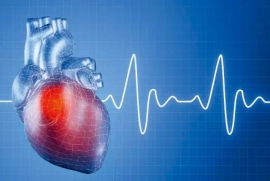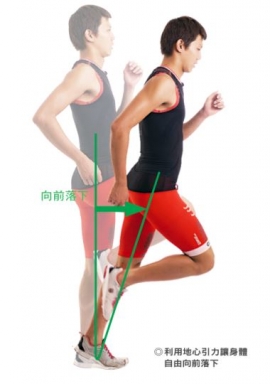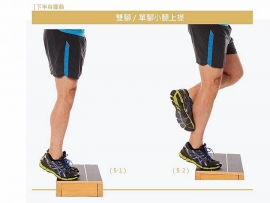Scientists have found that those who run barefoot, or in minimal footwear, tend to avoid "heel-striking," and instead land on the ball of the foot or the middle of the foot. In so doing, these runners use the architecture of the foot and leg and some clever Newtonian physics to avoid hurtful and potentially damaging impacts, equivalent to two to three times body weight, that shod heel-strikers repeatedly experience.
科学家发现那些光脚或脚上穿的非常少的人,更可能避免“足跟撞击”,而以足前端拓骨部分或足中部着地。通过这样做,(光脚)跑步者利用足部和腿部的建筑学与牛顿力学原理,从而避免疼痛和潜在的损伤。“足跟撞击”的力量相当于2-3倍体重,而穿鞋跑步者不断这经受这样的撞击。
"People who don't wear shoes when they run have an astonishingly different strike," says Daniel E. Lieberman, professor of human evolutionary biology at Harvard University and co-author of a paper appearing this week in the journal Nature. "By landing on the middle or front of the foot, barefoot runners have almost no impact collision, much less than most shod runners generate when they heel-strike. Most people today think barefoot running is dangerous and hurts, but actually you can run barefoot on the world's hardest surfaces without the slightest discomfort and pain. All you need is a few calluses to avoid roughing up the skin of the foot. Further, it might be less injurious than the way some people run in shoes."
本文的共同作者(文章刊登于本期Nature)哈佛大学人类进化生物学教授Daniel E. Lieberman谈到“不穿鞋的人跑步会受到不同的撞击。以足中部或前部着地,光脚跑步者可能对身体不产生任何撞击,比穿鞋跑步者所受的足跟撞击要少很多。当今,多数人认为光脚跑步是危险而且易受伤的,但是实际上,你可以世界上最简易的表面上光脚跑步而毫发无伤。你所需要的就是一些老茧以避免足部皮肤受损。而且,这可能比穿鞋跑步的人所受的伤小的多。”
Working with populations of runners in the United States and Kenya, Lieberman and his colleagues at Harvard, the University of Glasgow, and Moi University looked at the running gaits of three groups: those who had always run barefoot, those who had always worn shoes, and those who had converted to barefoot running from shod running. The researchers found a striking pattern.
通过观察美国和肯尼亚的跑步者,Lieberman和他在哈佛大学、格拉斯哥大学以及Moi大学的同事观察了三组不同人群的步态:即光脚跑步组;穿鞋跑不足以及从光脚跑步变为穿鞋跑步的人群。研究者发现了一个明显的规律。
Most shod runners -- more than 75 percent of Americans -- heel-strike, experiencing a very large and sudden collision force about 1,000 times per mile run. People who run barefoot, however, tend to land with a springy step towards the middle or front of the foot.
多数穿鞋跑步者,75%以上为美国人,经历足跟撞击,他们在每跑1公里就要经历约1000次如此突如其来的巨大撞击。而光脚跑步这,通常通过足中部或前部着地而保持一种弹性步伐。
"Heel-striking is painful when barefoot or in minimal shoes because it causes a large collisional force each time a foot lands on the ground," says co-author Madhusudhan Venkadesan, a postdoctoral researcher in applied mathematics and human evolutionary biology at Harvard. "Barefoot runners point their toes more at landing, avoiding this collision by decreasing the effective mass of the foot that comes to a sudden stop when you land, and by having a more compliant, or springy, leg."
哈佛大学应用数学和人类进化生物学的博士后,本文的共同作者Madhusudhan Venkadesan说“对于光脚或仅穿很薄鞋跑步的人而言,足跟撞击是非常疼的,因为每次足部陆地时都存在巨大的撞击力。光脚跑步者会用前足着地,通过减少足部有效质量以减少突然着地时的撞击,从而使腿部着地更自然或更有弹性。
The differences between shod and unshod running have evolutionary underpinnings. For example, says Lieberman, our early Australopith ancestors had less developed arches in their feet. Homo sapiens, by contrast, has evolved a strong, large arch that we use as a spring when running.
穿鞋和不穿鞋跑步的差异有进化证据支持。Lieberman说,例如,我们最早的祖先Australopith的足弓就不是很发达。相反,Homo sapiens 则有一个很大且坚硬的足弓使我们可以在跑步时把它当弹簧用。
"Our feet were made in part for running," Lieberman says. But as he and his co-authors write in Nature: "Humans have engaged in endurance running for millions of years, but the modern running shoe was not invented until the 1970s. For most of human evolutionary history, runners were either barefoot or wore minimal footwear such as sandals or moccasins with smaller heels and little cushioning."
“某种程度而言,我们的脚生来就是为跑步的”Lieberman谈到,但是正如他和共同作者在Nature上写到的:“人类出现跑步已经数百万年了,但是现代跑鞋知道20世纪70年代才发明。从人类进化史而言,跑步者或者光脚或者穿像袜子或鹿皮鞋这样的软鞋跑步,这些东西很少有跟或缓冲垫。”
For modern humans who have grown up wearing shoes, barefoot or minimal shoe running is something to be eased into, warns Lieberman. Modern running shoes are designed to make heel-striking easy and comfortable. The padded heel cushions the force of the impact, making heel-striking less punishing.
Lieberman警告到,对于穿鞋长大的现代人而言,应该缓慢适应光脚或穿的较少的跑步。现代跑鞋都将足跟撞击减轻到最小和最舒适的程度。足跟缓冲垫缓冲了撞击力,使足跟受到的撞击并不那么严重。
"Running barefoot or in minimal shoes is fun but uses different muscles," says Lieberman. "If you've been a heel-striker all your life you have to transition slowly to build strength in your calf and foot muscles."
Lieberman说,“光脚跑步或穿的较少跑步很有意思,但是其使用不同的肌肉群。如果你是一个终身收到足跟撞击的人,那么你需要缓慢进行过渡以强健你的小腿和足部肌肉。”
In the future, he hopes, the kind of work done in this paper can not only investigate barefoot running, but can provide insight into how to better prevent the repetitive stress injuries that afflict a high percentage of runners today.
他希望,将来,他们所作的工作不仅是调查光脚跑步,而且可被用于如何更好的阻止重复的压力损伤,这种损伤是当今跑步者常见的一个问题。
"Our hope is that an evolutionary medicine approach to running and sports injury can help people run better for longer and feel better while they do it," says Lieberman, who has created a web site, www.barefootrunning.fas.harvard.edu, to educate runners about the respective merits of shod and barefoot running.
“我们的希望是,有一种针对跑步和运动损伤进化医疗方法,这种方法可以帮助人们可以更好的长时间跑步,并且在他们跑步时,感觉良好。”Lieberman如是说,他建立了一个网站ww.barefootrunning.fas.harvard.edu, 该网站告诉跑步者关于穿鞋和光脚跑步的优点。
The Nature paper arose out of the senior honors theses of two Harvard undergraduates, William A. Werbel '08 and Adam E. Daoud '09, both of whom went to Africa with Lieberman to help collect data for this study.
Nature授予两位哈佛本科生08级的William A. Werbel 与09级的Adam E. Daoud 最高荣誉,他们陪同Lieberman一起去非洲,协助本研究的数据收集工作。
"Running barefoot or in minimal shoes is fun but uses different muscles," said Harvard professor Daniel Lieberman. "If you've been a heel-striker all your life, you have to transition slowly to build strength in your calf and foot muscles." (Credit: Image courtesy of Harvard University)
转自:rain man_百度空间



